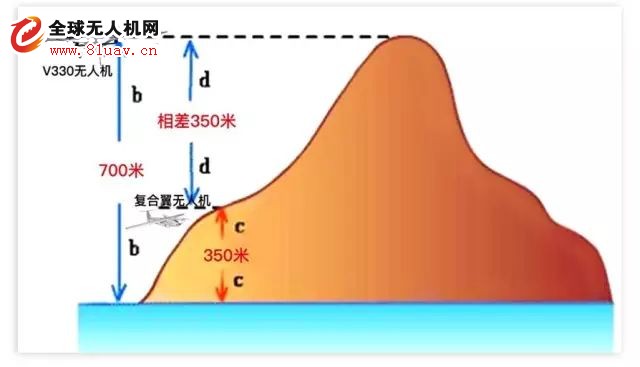In recent years, the development of the drone industry has often been the headline of major media, known as the sedan chair of the future industry. However, from the development trend of the drone industry, multi-rotor drones have always been the mainstream of small and medium-sized drones. With the expansion of the field of UAV applications, multi-rotor UAVs are limited by navigation time and flight speed, gradually revealing its limitations. The emergence of compound wing drones in the industry has brought certain expectations to the industry application field, but from the perspective of aerodynamics and operational efficiency, composite wing drones are clearly not the best choice for industrial applications. Therefore, a tilt-rotor drone that has the advantages of high-speed cruising with fixed-wing UAVs and can take off and land vertically and accurately hover is ready.
In view of this, Shenzhen Zhihang UAV Co., Ltd. spent two years investing millions of dollars in research and development of modern dynamic drones, and successfully developed the world's first truly tilting rotorless drone in 2017. .

V330 tilting rotor drone
At the new product launch conference of “Intelligence Endless·New Journey 2017 Sky Feastâ€, the Zhihang V330 tilting rotorcraft drone appeared in front of the media and peers. It perfectly compensates for the shortcomings of the traditional composite wing drone in aerodynamics and operational performance. It is a subversive replacement product, which far exceeds the performance of vertical take-off and landing, voyage, speed and load. The traditional composite wing drone has gained wide recognition in the industry.
Effective load is 50% significant
Compared with other composite wings on the market, the V330 saves a motor, increases the effective load, and also loads the 10x zoom camera and image transmission. The altitude test can last 10 minutes.

Heavy load
The range is 30% far
The V330 drone uses a nearly elliptical wing and a V-shaped tail to reduce air resistance and enhance flight stability. The range is up to 60KM.

50% higher climb rate
Compared with other composite wings on the market, the V330 has a double-powered climb rate. The same test environment, other composite wings can only climb 350 meters, while the V330 can easily climb to 700 meters, and the transition time from vertical to horizontal is short and the safety is high. .

Plateau performance is good, the ceiling is 20% higher
The machine adopts the TOF altimetry module to ensure that the aircraft can achieve stable off-site take-off and landing, and there is no special restriction on the altitude difference between the landing and landing points, ensuring that Pegasus can adapt to various terrains and reduce the requirements for the use of the terrain environment.

Stronger wind resistance
The aircraft can fly for up to an hour in a 7-level wind (16m/s), while a compound-wing UAV is difficult to fly smoothly in a wind above level 6.

Hovering multiple times in the middle
The V330 drone uses common GPS and differential GPS (RTK) to back up each other for precise positioning in flight (centimeter-level positioning accuracy). The redundant design can improve the anti-interference ability and help the aircraft provide more in the complex environment. For precise and effective positioning data, let the drone fly, take off and land accurately and hover.

Cross-sea flight reflects high reliability
On February 15 this year, the V330 drone took off from the seaside of Xiyong, Dapeng New District, Shenzhen, and landed at the designated location of Sanmen Island, 12 kilometers away. The length of time was about 5 minutes, which was much less than the 20-minute flight time of the speedboat.

V330 spans the island
Double-engine propulsion reliability
Comparing other composite wings on the market, the V330 drone uses dual generators as the power for cruising. In the case of one motor failure, the other motor can also provide forced power and safety.
With flaps low speed
The flaps carried by the V330 can increase the area of ​​the wing and change the camber of the wing, while also forming one or several gaps. Increasing the area can increase the lift, forming a gap so that the airflow on the lower surface flows to the upper surface through the gap, so that the airflow velocity on the upper surface is increased, the laminar flow can be maintained in a larger range, the lift can be increased, and the stall phenomenon can be reduced.
Thousands of accident-free flights
As an industrial drone with superior performance, the V330 has passed thousands of flight tests in the fields of logistics, fire protection, and maritime affairs, and all of them have taken off and land smoothly without a flight accident.
In a nutshell, the traditional compound-wing UAVs have been in full swing in the turbulent technological upsurge. The emerging V330 tilt-rotor drones are heavy, flying far, flying high, and dual-issue backups. Such performance advantages have become the first choice for people in the future UAV application field. It will lead the revolutionary trend of UAV technology and play an important role in logistics, fire protection, public security, surveying, maritime and border defense.
Shenzhen ChengRong Technology Co.,Ltd. , https://www.laptopstandsuppliers.com